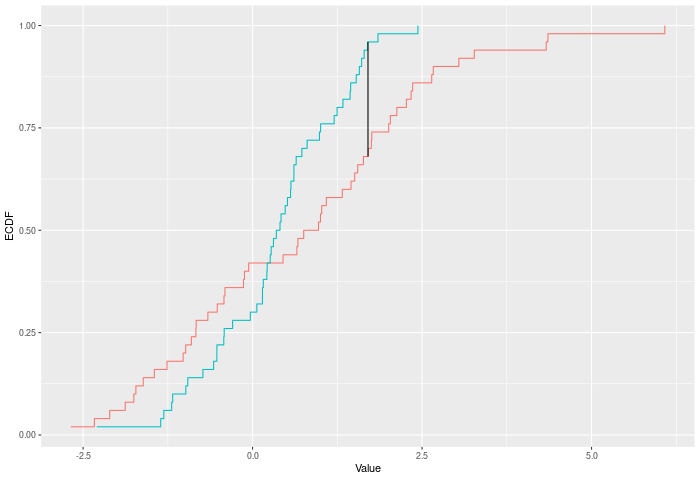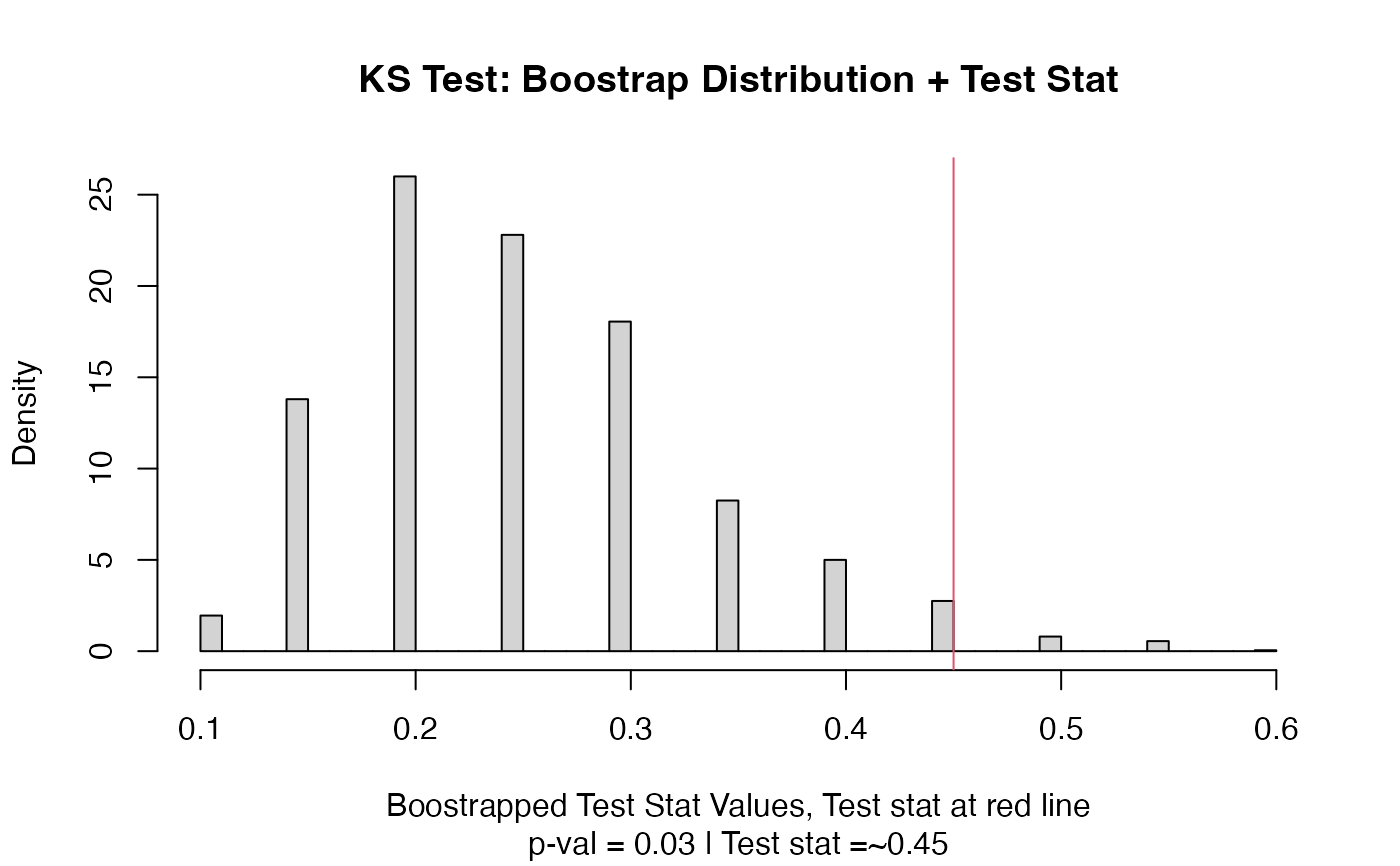A two-sample test using the Kolmogorov-Smirnov test statistic (ks_stat).
Usage
ks_test(a, b, nboots = 2000, p = default.p, keep.boots = T, keep.samples = F)
ks_stat(a, b, power = def_power)Arguments
- a
a vector of numbers (or factors -- see details)
- b
a vector of numbers
- nboots
Number of bootstrap iterations
- p
power to raise test stat to
- keep.boots
Should the bootstrap values be saved in the output?
- keep.samples
Should the samples be saved in the output?
- power
power to raise test stat to
Value
Output is a length 2 Vector with test stat and p-value in that order. That vector has 3 attributes -- the sample sizes of each sample, and the number of bootstraps performed for the pvalue.
Details
The KS test compares two ECDFs by looking at the maximum difference between them. Formally -- if E is the ECDF of sample 1 and F is the ECDF of sample 2, then $$KS = max |E(x)-F(x)|^p$$ for values of x in the joint sample. The test p-value is calculated by randomly resampling two samples of the same size using the combined sample.
In the example plot below, the KS statistic is the height of the vertical black line.

Inputs a and b can also be vectors of ordered (or unordered) factors, so long as both have the same levels and orderings. When possible, ordering factors will substantially increase power.
Functions
ks_test(): Permutation based two sample Kolmogorov-Smirnov testks_stat(): Permutation based two sample Kolmogorov-Smirnov test
See also
dts_test() for a more powerful test statistic. See kuiper_test() or cvm_test() for the natural successors to this test statistic.
Examples
set.seed(314159)
vec1 = rnorm(20)
vec2 = rnorm(20,0.5)
out = ks_test(vec1,vec2)
out
#> Test Stat P-Value
#> 0.45 0.03
summary(out)
#> KS Test
#> =========================
#> Test Statistic: 0.45
#> P-Value: 0.03 *
#> - - - - - - - - - - - - -
#> n1 n2 n.boots
#> 20 20 2000
#> =========================
#> Test stat rejection threshold for alpha = 0.05 is: 0.4
#> Null rejected: samples are from different distributions
plot(out)
 # Example using ordered factors
vec1 = factor(LETTERS[1:5],levels = LETTERS,ordered = TRUE)
vec2 = factor(LETTERS[c(1,2,2,2,4)],levels = LETTERS, ordered=TRUE)
ks_test(vec1,vec2)
#> Test Stat P-Value
#> 0.400 0.716
# Example using ordered factors
vec1 = factor(LETTERS[1:5],levels = LETTERS,ordered = TRUE)
vec2 = factor(LETTERS[c(1,2,2,2,4)],levels = LETTERS, ordered=TRUE)
ks_test(vec1,vec2)
#> Test Stat P-Value
#> 0.400 0.716